- HIS5
- CFP
- Submission
- Program
- Registration
- About HIS
- HIS.5 Committees
- Information
- Ads | Links
- HIS5-Poster
5th Hyperheritage International Symposium
Heritage and experience design in the digital age | Patrimoines et design d’expérience à l'ère numériqueMay 13-15, 2018 | University of Constantine 3 | Constantine, Algeria
The term HyperHeritage covers every hybrid cultural heritage environment augmented with digital information inviting us to explore new ways of perceiving, experiencing and practicing cultural heritage. Massive developments on ICT and the unprecedented spread of mobile, location-aware and immersive (Augmented and Virtual Reality) technologies and devices, advocate for the exploration of new forms of Human to Human, Human-Computer and Human-Environment interaction and information communication on Cultural Heritage. These advances also imply gradually establishing new ways and means to comprehend, access, process, experience and perceive digital and interconnected Cultural Heritage information on a variety of delivery platforms, devices and environments.
Human-to-Human computer-mediated communication protocols, are inviting information designers to reconsider the design of all digitally augmented Cultural-Heritage environments. Rather than questioning or challenging the role of traditional Cultural Heritage institutions, HyperHeritage comes to offer new communication means for processing, experiencing and perceiving Cultural Heritage information, as produced, created, consumed and experienced in all digitally interconnected dimensions and spaces.
In June 2016, at the last conference, UNESCO reaffirmed the importance of tangible and intangible cultural heritage for the preservation and promotion of culture and as an engine for sustainable development.
We are moreover witnessing an increased engagement from researchers, social actors, institutions and diverse publics for reconceptualising the transmission of cultural heritage in all its dimensions. This phenomenon is inherent to the preservation, development, experiencing and transmission of cultural heritage. It occurs in different temporalities and merges all facets of cultural heritage as it is experienced, perceived and lived. It also evokes issues related with concepts such as the construction of self, identity, emotions, memory, creativity and imaginary heritage spaces.
The fifth HyperHeritage International Symposium (HIS.5) will be focusing –yet not limited- on the theme "Heritage and experience design in the digital age".
Le terme HyperHeritage recouvre tout environnement hybride du patrimoine culturel (enrichi d'informations numériques) qui permet d'explorer de nouvelles facettes relatives à la perception et à la pratique de l'information culturelle. Le développement massif et l'utilisation impressionnante des TIC (technologies de l'information et de la communication) et des dispositifs immersifs (réalités augmentées et virtuelles) ont permis d'explorer de nouvelles formes de communication entre l'humain et l'information patrimoniale et culturelle. Les TIC ont mis au point de nouveaux moyens, souvent indépendants de l'espace et du temps, pour atteindre et traiter l'information et les dispositifs du patrimoine culturel interconnecté.
Les nouveaux protocoles de communication «médiatisés» entre humains, invitent les designers d'information à reconsidérer l'environnement informationnel du patrimoine culturel. Cependant, il est important de noter que l'idée de "HyperHeritage" ne vise pas à interroger les Institutions Culturelles Traditionnelles ; elle suggère d'autres façons de percevoir et de traiter l'évolution de l'Information Culturelle et Patrimoniale dans des espaces illimités et fortement interconnecté.
En juin 2016, lors de la dernière conférence, l’UNESCO a réaffirmé l'importance du patrimoine, matériel et immatériel pour la préservation et la promotion de la culture, et comme moteur du développement durable.
Par ailleurs, nous assistons de plus en plus à une volonté de la part de chercheurs, d’acteurs sociaux, mais aussi de passionnés, de concevoir la transmission du patrimoine. Ce phénomène inhérent au maintien et au développement d’une culture, est constitué de plusieurs temporalités et mêle d’une part « le patrimoine perçu » et « le patrimoine vécu » , mais interpelle aussi l’identité, la mémoire, le rêve, l’imaginaire, la créativité, l’émotion, etc.Le cinquième symposium international sur l'hyperhéritage (HIS.5) se concentrera, sans toutefois s'y limiter, sur la conception du patrimoine et de l'expérience à l'ère numérique.
HIS.5 is sponsored by | HIS.5 est parrainé par :
University of Constantine3 DeVisu-UVHC CREATIC Ville&Patrimoine CLOA UMONS SFSIC AAUJ ESSTD CiTU
5th Hyperheritage International Symposium
Heritage and experience design in the digital age | Patrimoines et design d’expérience à l'ère numériqueMay 13-15, 2018 | University of Constantine 3 | Constantine, Algeria
HIS.5 examines the connections and operational complementarities occurring in the realm of the digital when it comes to the conceptualisation and design of digitally mediated heritage experiences. Indeed, while the theoretical elaborations on the creation, preservation and dissolution of heritage makings and memory registries are numerous, there are few empirical works dealing with planned or progressive experiments, and the integration of digital technology. Thus, HIS.5 focuses on the relationship between heritage experiences combining design and powerful tools for the preservation, study and transmission of cultural heritage information in an innovative way. It questions the diversity of merging points both in cultural heritage and experience design and how theories as well as contemporary practices relate to cultural heritage issues.
The goal is to think about cultural heritage, from its preservation and conservation to its dissemination, apprehension and re-appropriation, by integrating innovative tools that allow to "live" physically or virtually in “mixed” or "augmented reality" environments.The main axes around which HIS.5 will evolve include:
- Adding new value to cultural heritage monuments, artefacts, documents and know-how through the use of digital technologies (virtual or augmented reality, digitization, 3D printing);
- Creating and curating new content for experiencing cultural heritage, accessible and available, anywhere, anytime on a variety of platforms and devices (e.g. ubiquitous computing, NFS, cross-media, ...);
- Digitizing, producing, managing, making sense of, disseminating digital heritage content and associated data
Topics (key words)
Main topics of interest for the conference include -but are not limited to- the following:
- Augmented Reality and Virtual Reality for Cultural Heritage
- Cultural Heritage applications and Big Data
- Computer Vision for Cultural Heritage
- Archives and Data Management
- Data Visualisation and Cultural Heritage
- Spatial data mining and Cultural Heritage
- Serious Games for Cultural Heritage
- Cultural Heritage Formal and Informal Education and Tools
- Cultural Heritage Information acquisition, restitution and retrieval
- Cultural Heritage Information Design
- Experience Design
- Advanced digitization & scanning
- GIS services and architectures for CH
- Human-Cultural Heritage Interaction
- Hyper Heritage Project Development & Management
- Hypermedia
- Internet-of-Things (IoT)
- Modeling and Simulation approaches
- Open Cultural Heritage Data Management
- Social Networks & Communities in Cultural Heritage
The conference aspires to explore and compare emerging scientific approaches on these topics. Authors are invited to submit papers describing past and current research projects and initiatives, as well as experience with proof-of-concept, prototype and operational systems.
Instructions to Authors
1st Step:
Abstract (max 5000 characters) to be sent as follow:
First Page: Paper Title and Subtitle
Author(s)’s name(s) and affiliation
Second Page: Abstract no longer than 5000 charcaters with a list of 6 keywords maximum.
2d Step:
Full papers (max 25000 characters) to be submitted as PDF file. Organized as follow:
First Page: paper Title, Subtitle, Author(s)’s name(s) and affiliation, Acknowledgments
Second Page: Abstract no longer than 300 words.
List of 6 keywords maximum.
Third and following pages: paper text. With numbered paragraphs.
References: the citation style used for HIS.5 is APA. Please use the following resources on APA:
http://www.apastyle.org
https://owl.english.purdue.edu/owl/resource/560/01/Abstract and papers to be submitted directly on the following link: click here "Submission". For all questions, contact: info@hyperheritage.org
The contributions should be fully anonymized and should not reveal the name of the author(s). Authors of accepted papers will be invited to submit camera-ready papers in PDF (submitted directly to the conference submission system: Submission)
Official language of the conference
Paper submission: English and French
Presentation: English and French (simultaneous translation is not available)
Documents that do not comply with this rule will be excluded from the evaluation process.
Reviewing process
All submitted papers will be reviewed using a double blind refereeing process.
Important dates
Abstract submission: December 30, 2017
Notifications to authors: February 15th, 2018
Final papers submission: March 10, 2018
Notifications to authors: April 10, 2018Le colloque Patrimoines et design d’expérience à l'ère numérique interroge les connexions et les complémentarités opérationnelles dont témoigne le numérique dans le but de conceptualiser et designer une expérience de médiation du patrimoine. En effet, si les élaborations théoriques sur la création, la préservation et la dissolution des registres de mémoires et des biens patrimoniaux sont nombreux, rares sont les travaux empiriques qui traitent des expériences planifiées ou progressives, et l’intégration du numérique. Ainsi, ce colloque s’intéresse aux relations entre les expériences patrimoniales qui mêlent design et outils performants pour valoriser et transmettre de manière innovante le patrimoine. Il interroge la diversité des points de rencontre entre le patrimoine et le design d’expérience et comment les théories et pratiques s’articulent-elles aux enjeux du patrimoine.
L’objectif est de penser le patrimoine, depuis sa conservation à sa réappropriation, en intégrant des outils novateurs qui permettent de le « vivre » physiquement ou virtuellement grâce à la « réalité augmentée » et/ou la « réalité mixte ». Les axes ciblés pourront notamment relever des domaines suivants :
- Valorisation d’œuvres, de monuments ou de savoir-faire grâce au numérique (ex : réalité virtuelle ou augmentée, numérisation et impression 3D) ;
- Création de nouvelles offres de contenus culturels accessibles sur Internet ou autres supports numériques (ex : contenus de réalité virtuelle et augmentée) ;
- Numérisation, production, gestion, valorisation et diffusion des contenus numériques et des données associées
Le colloque sera accompagné par un salon dédié aux outils technologiques liés à la préservation et la valorisation du patrimoine. Ce salon qui regroupe les professionnels du domaine sera un espace de démonstration et de partage d’expériences entre les professionnels et les chercheurs.
Thématiques (mots clés)
Les centres d'intérêt de HIS.5 incluent, et ne se limitent pas aux thématiques suivantes:
- Acquisition, restitution et récupération d'informations sur le patrimoine culturel
- Application Big Data dans le domaine du patrimoine culturel
- Approches de modélisation et de simulation des données patrimoniale
- Design de l'information sur le patrimoine culturel
- Développement et gestion de projets Hyper Heritage
- Exploration des données spatiales du patrimoine culturel
- Gestion des données d'archivage du patrimoine culturel
- Gestion des données sur le patrimoine culturel ouvert
- Interactions humain patrimoine-culturel
- Internet des Objets (IoT) patrimoniaux
- Jeux sérieux pour le patrimoine culturel
- Méthodologies et technologies pour la numérisation du patrimoine culturel
- Outils éducatifs sur le patrimoine culturel
- Réalité augmentée et réalité virtuelle pour le patrimoine culturel
- Réseaux sociaux et communautés dans le patrimoine culturel
- Systèmes d'Information Géographique dédiés au patrimoine culturel
- Vision par ordinateur pour le patrimoine culturel
- Visualisation des données du patrimoine culturel
Instructions aux auteurs
1ere étape
Résumé (5000 caractères maximum) à envoyer comme suivant:
Première page: Titre de papier et sous-titre
Nom (s) et affiliation de l'auteur (s)
Deuxième page: Résumé pas plus de 5000 charcaters avec une liste de 6 mots-clés maximum.2eme étape
Les papiers complets (maximum 25000 caractères) doivent être soumis en format PDF, et organisés comme suivant:
Première page: titre du papier, sous-titre, nom (s) et et affiliation de l'auteur (s), remerciements
Deuxième page: Résumé pas plus de 300 mots, et une liste de 6 mots-clés maximum.
Troisième page et pages suivantes pages: le contenu du papier avec des paragraphes numérotés.
Références: le style de citation à utiliser pour HIS.5 est APA. Veuillez utiliser les ressources suivantes sur APA : http://www.apastyle.org
https://owl.english.purdue.edu/owl/resource/560/01/Résumés et papiers à soumettre directement sur le lien suivant: cliquez ici "Soumission". Pour toutes questions, contactez: info@hyperheritage.org
Les contributions devraient être entièrement anonymisées et ne devraient pas révéler le nom de l'auteur (s). Les auteurs des papiers acceptés seront invités à soumettre des versions prêtes à imprimer en format PDF (à déposer sur le système de soumission de la conférence: Soumission)Langues officielles du colloque
Rédaction des propositions : Anglais et Français
Présentation : Anglais et Français
Procédure de sélection
Toutes les soumissions seront examinées en double aveugle.Dates importantes
- Soumission des résumés : 30 décembre, 2017
- Réponse aux auteurs : 15 février, 2018
- Soumission des contributions : 10 mars, 2018
- Réponse aux auteurs : 10 avril, 2018
5th Hyperheritage International Symposium
Heritage and experience design in the digital age | Patrimoines et design d’expérience à l'ère numériqueMay 13-15, 2018 | University of Constantine 3 | Constantine, Algeria
For all submissions please click on the following: SUBMIT
Instructions to Authors
1st Step:
Abstract (max 5000 characters) to be sent as follow:
First Page: only Paper Title & Subtitle
Second Page: Abstract no longer than 5000 charcaters with a list of 6 keywords maximum.
2d Step:
Full papers (max 25000 characters) to be submitted as PDF file. Organized as follow:
First Page: paper Title, Subtitle, Abstract no longer than 300 words, List of 6 keywords maximum.
Second Page and following: paper text. With numbered paragraphs.
References: the citation style used for HIS.5 is APA. Please use the following resources on APA:
http://www.apastyle.org
https://owl.english.purdue.edu/owl/resource/560/01/
Abstract and papers to be submitted directly on the following link: click here "Submission". For all questions, contact: info@hyperheritage.org
The contributions should be fully anonymized and should not reveal the name of the author(s). Authors of accepted papers will be invited to submit camera-ready papers in PDF (submitted directly to the conference submission system: Submission)
Official language of the conference
Paper submission: English and French
Presentation: English and French (simultaneous translation is not available)
Documents that do not comply with this rule will be excluded from the evaluation process.
Reviewing process
All submitted papers will be reviewed using a double blind refereeing process.
Important dates
Abstract submission: December 30, 2017
Notifications to authors: February 15, 2018
Final papers submission: March 10, 2018
Notifications to authors: April 10, 2018
5th Hyperheritage International Symposium
Heritage and experience design in the digital age | Patrimoines et design d’expérience à l'ère numériqueMay 13-15, 2018 | University of Constantine 3 | Constantine, Algeria
PROGRAM
13 mai 2018
8h30-9h00
Accueil
09h00-10h30
Allocutions :
Mr le Recteur, Pr Ahmed BOURAS - Université Salah Boubnider Constantine 3
Mme le Doyen, Pr Badia SAHRAOUI – Faculté d’architecture et d’urbanisme FAU
Pr Hafida BOULEKBACHE – Département Génie civil architectural et urbain - UVHC
Dr Nasreddine BOUHAI – Département des Humanités Numériques, Université Paris 8
10h30-11h00 : Pause café
11h00-13h00
Session n°1
-Amina Louiza Lacheheb, Najet Mouaziz Bouchentouf and Malika Kacemi Meghfour. Le numerique au secours du patrimoine disparu. saint-reparatus a orleansville (chlef) et les halles centrales d'oran.
-Gherraz Halima, Guechi Imen and Alkama Djamel. Vers l’intégration du numérique pour la préservation d’un patrimoine culturel (l’étude morphométrique d’un tissu ksourien)
-Radia Bernaoui and Salim Kebbab. Un transfert d’héritage informationnel et de savoir-faire des vétérinaires algériens. Usage des applications numériques du téléphone mobile
-Raihana Allani, Fakher Kharrat and Pierre Leclercq. Vers une nouvelle patrimonialisation de la mémoire collective: Rôle des outils numériques dans l’expérience patrimoniale
13h00-14h00 : Déjeuner
14h00-16h00
Session n°2
-Rahmane Ali. La modélisation 3D un outil de conservation et d’accès a l’information patrimoniale. Expérience du département d’architecture de SETIF.
-Khaoula Hannachi and Assia Samaï-Bouadjadja. « Les technologies immersives au secours d’un patrimoine en péril : Les demeures des entrepreneurs de la première moitié du 20ème siècle à Sétif (Algérie)»
- Wissem Chibi. Presence of cultural heritage subjects in social media -Facebook pages as a sample-
-Bani Feriel Brahmi, Ilham Kitouni and Souad Sassi Boudemagh. «The implantation of building information modeling (bim) in the conservation of the architectural heritage - A State of the Art»
16h00-16h30 : Pause café
16h30-18h00
Session n°3
-Amel Bellala and Farès Khima. Sustainable management of heritage in the digital age
-Antoine Moreau. Matrimoine. Le patrimoine à l’ère de l’internet et du numérique
-Ines Ben Khemis Debbiche. La gamification, nouvelle représentativité promotionnelle du patrimoine culturel tunisien
14 mai 2018
08h30-09h00
Accueil
09h00-10h30
Session n°4
-Gay Jean Jacques. De la Maintenance patrimoniale au design d’artiste.
- Hafida Boulekbache, Daniel Schmitt, Virginie Blondeau, Florence Raymond and Lucile Guittienne. Le design d'expérience pour valoriser le patrimoine culturel matériel. Analyse des expériences Gigapixels et Iguane marin
-Bernard Jacquemin, Mathias Heizmann and Dominique Cotte. La description de la musique à l’épreuve des usagers. Le projet Dorémus
10h30-11h00 : Pause café
11h00-13h00
Sessions parallèles
Session n°5
-Douniazed Chibane. L'apport des TIC au processus de mediation du patrimoine culturel, cas d'Hippone à Annaba
-Zina Boultif and Nousseiba Djeha. E-marketing of local cultural heritage through social networking sites
- Sabrina Kacher and Ikhlas Lasri. Le BIM appliqué à une œuvre du patrimoine Algérien Cas du Lycée l'Emir Abdelkader ex Bugeaud
Session en vidéoconférence n°6
-Olivier Le Deuff. HyperOtlet : entre héritage et design prospectif pour les humanités digitales
-Mylène Pardoen. Bretez II : Quand le sensoriel fait patrimoine
-Marcos Javier Lazo Barco Barco, Khaldoun Zreik and Nasreddine Bouhai. La céramique équatorienne, patrimoine américain. Les EIAH peuvent rendre valeur aux patrimoine des cultures américaines ?
-Felipe Loureiro and Roberto Bartholo. Extending presence: built heritage in the real/virtual chiasma
13h00-14h00 : Déjeuner
14h00-16h00
Sessions parallèles
Session n°7
-Oulfa Nouha Kouri and Samira Debach - Benzaggouta. Plateforme ouverte d’aide à la production de la connaissance du patrimoine architectural : Cas du Palais du Bey de Constantine.
-Nadir Alikhodja, Hamza Zeghlache and Monia Bousnina. New technologies for the reconstruction of an altered heritage, the church of Bordj Bou Arreridj In Algeria
-Akram Bekkai, Aissa Mahimoud and Karima Messaoudi. La Maquette Numérique Au Service Du Patrimoine Bâti
-Rafik Brakchi and Sabrina Kacher. La modélisation paramétrique et la photo-modélisation architecturale comme outils d’aide au relevé du patrimoine architectural algérien : cas de l’église Sainte-Trinité d’Alger
Session n°8
-Zahra Hadjou, Souria Salem Zinai and Farid Rahal. Evaluation de la dégradation du patrimoine bâti sous l’influence de l'étalement urbain. Le cas de la ville d'Oran, Algérie.
-Yasser Nassim Benzagouta and Imane Fantazi. Réception des procédures de patrimonialisation au niveau du centre historique de Constantine
-Hala Benarbia and Badia Sahraoui Belabed. Un inventaire intelligent des bâtiments édifiés entre 1930-1937 À Constantine.
-Maïssa Acheuk-Youcef. Un SIG historique pour l’historicisation et la connaissance du patrimoine architectural et urbain des XIXème et XXème siècles à Constantine
16h00-16h30 : Pause café
16h30-17h30
Session n°9
-Muath Sabha and Muhammad Safarini. Image Classification for Cultural Heritage
-Amjad Rattrout and Shafaq Abulhouf. Documenting and disseminating Intangible cultural heritage in Palestine The Palestinian traditional dance Dabka as a case study
18h00-18h15
Clôture du colloque
5th Hyperheritage International Symposium
Heritage and experience design in the digital age | Patrimoines et design d’expérience à l'ère numériqueMay 13-15, 2018 | University of Constantine 3 | Constantine, Algeria
Registration Form
Please copy and fill in the form below in order to register for the 5th International HyperHeritage Seminar (HIS.5) and send it to the conference secretariat:
Registration fees :For international participants 200 euros / participant. Included in the fees (during the conference, i.e. from 13 to 15 May 2018): participation to the conference, hotel, transportations (bus from the hotel to the conference room), lunches, coffee breaks.
For local participants, who will not be accommodated, academics and doctoral students registration fees are respectively : 10.000DA and 5000DA (including conferences, meals, coffee break)
All participants are invited to send the following information before March 1st, 2018 to info@hyperheritage.org
Name
Institution
Title
address
URL
For more information, please contact the organization committee: info@hyperheritage.org
Hyperheritage International Symposium
Digital technology has brought forward new interactions, practices, perceptions on anything cultural in general and Cultural Heritage more in particular. The term HyperHeritage covers every cultural environment that embeds and includes traditional and digital cultural information, whether this environment is “traditional”, hybrid (traditional one integrating digital information and devices) or digital one (Virtual, Augmented and Mixed Environments). Related HyperHeritage domains concern but are not limited to: archaeology, architecture, design (digital design included), history, Information and Communication Technologies (ICT) and related disciplines. HyperHeritage is a highly multidisciplinary and collaborative proposing new, intelligent, robust, reliable and engaging perceptions, studies and uses of Cultural Heritage. Practicing HyperHeritage implies using, adopting and adapting state-of-the-art-technology enabling researchers and users of cultural heritage to explore and experience ‘real-virtual’ information in real-time. HyperHeritage learning environments for the study, presentation, preservation, apprehension and enjoyment of Cultural Heritage can be powerful, engaging, innovative, multisensory and personalised.
HIS.1
The 1st meeting (HIS.1) was held in Ramallah-Palestine (December 11-12, 2013). It emerged that most of South Mediterranean Cultural Heritage is poorly Digitized as well as digitally weakly informed and documented.
HIS.2
The 2nd meeting (HIS.2), organised in Kerkena-Tunisia (April 2-4, 2015), suggested giving priority to research and innovation actions related to Cultural Heritage Information (C.H.I) retrieval, acquisition, validation, archiving and indexing as a way to promote better design, reconstruction, management, promotion, dissemination and communication of Cultural Heritage.
HIS.3
The 3rd HyperHeritage International Seminar (HIS.3) organised in Kerkena-Tunisia (May 5-7, 2016) was focused on Hybrid Cultural Heritage Information Design in all its scientific, technological and social dimensions. "Hybrid" in this context refers both to tangible and intangible cultural heritage information that addressed by digital technologies.
HIS.4
The fourth HyperHeritage International Seminar (HIS.4) organised in Nablus by the AAUJ (May 2-5, 2017) and focused on Smart Heritage.
5th Hyperheritage International Symposium
Heritage and experience design in the digital age | Patrimoines et design d’expérience à l'ère numériqueMay 13-15, 2018 | University of Constantine 3 | Constantine, Algeria
International Steering Committee
- Messaoud AICHE, Salah Boubnider University – Constantine 3, Algeria
- Naoufel ABBES, Higher School on Design Sciences and Technology, Tunisia
- Roberto BARTOLO, Federal Universit of Rio de Janeiro, Brazil
- Vincent BECUE, Université de Mons, Belgium
- Badia BELABED SAHRAOUI, Salah Boubnider University – Constantine 3, Algeria
- Leila BENLATRECHE, Salah Boubnider University – Constantine 3, Algeria
- Bouba BENRACHI, Salah Boubnider University – Constantine 3, Algeria
- Radia BERNAOUI, ENSV, ALgeria
- Guillaume BESACIER, CITU-paragraphe, University Paris8, France
- Omar BILBECH, École Supérieure des Sciences et Technologies du Design, Tunisia
- Philippe BONFILS, Université de Toulon, France
- Abdelouahab BOUCHAREB, Salah Boubnider University – Constantine 3, Algeria
- Nasreddine BOUHAI, CITU-paragraphe, University Paris8, France
- Hafida BOULEKBACHE, Univ Lille Nord de France, UVHC, DeVisU, France
- Nasreddine BOUZIANE, Salah Boubnider University – Constantine 3, Algeria
- Grégory CHAMBON, Centre François Viète, Université de Bretagne Occidentale, France
- Stéphane CHAUDIRON, GERIICO, University Lille III, France
- Robert S. DAVIES, Cyprus University of Technology, Cyprus
- Samira DEBACHE BENZAGOUTA, Salah Boubnider University – Constantine 3, Algeria
- Abderrezak DOURARI, University of Algiers 2, Algeria
- Ramzi HASSAN, School of Landscape Architecture at the Norwegian University of Life Sciences, Norway
- Mohamed HASSOUN, ENSSIB-Lyon, France
- Marinos IOANNIDES, Cyprus University of Technology, Cyprus
- Smail KHAINNAR, Univ Lille Nord de France, UVHC, DeVisU, France
- Ioannis KANELLOS, Computer Science department of Télécom Bretagne, France
- Jean-Charles LAMIREL, Université de Strasbourg, France
- Patrizia LAUDATI, Univ Lille Nord de France, UVHC, DeVisU, France
- Sylvie LELEU-MERVIEL, Univ Lille Nord de France, UVHC, DeVisU, France
- Mahmoud Al MANASSRA, Arab American University, Palestine
- Aissa MAHIMOUD, Salah Boubnider University – Constantine 3, Algeria
- Alain MILLE, University Lyon 1, France
- Giovanni De PAOLIi, University of Montreal, Canada
- Daniel RAICHVARG, Université de Bourgogne, France
- Amjad RATROUT, Arab American Universit, Palestine
- Muath SABHA, Arab American University, Palestine
- Chaouche SALAH, Salah Boubnider University – Constantine 3, Algeria
- Zineddine SEFFADJ, Salah Boubnider University – Constantine 3, Algeria
- Anis SEMLALI, École Supérieure des Sciences et Technologies du Design, Tunisia
- Marta SEVERO, University Paris 10, France
- Pascal SIMEON, Université de Mons, Belgium
- Mateo TRELEANI, Université de Lille 3, France
- Xenophon ZABULIS, Institut of Computer SCiences, Foundation of Research and Technology Hellas, Greece
- Khaldoun ZREIK, Digital Humanities Department, CITU-paragraphe, University Paris8, France (HIS conferences general chair)
Steering Committee
- Badia BELABED SAHRAOUI, Salah Boubnider University – Constantine 3, Algeria
- Leila BENLATRECHE, Salah Boubnider University – Constantine 3, Algeria
- Guillaume BESACIER, Digital Humanities Department, CITU-paragraphe, University Paris8, France
- Nasreddine BOUHAI, Digital Humanities Department, CITU-paragraphe, University Paris8, France (HIS.5 Co-Chair)
- Areti DAMALA, Digital Humanities Department, CITU-paragraphe, University Paris8, France
- Hafida BOULEKBACHE, Univ Lille Nord de France, UVHC, DeVisU, France (HIS.5 Chair)
- Nasreddine BOUZIANE, Salah Boubnider University – Constantine 3, Algeria
- Smail KHAINNAR, Univ Lille Nord de France, UVHC, DeVisU, France
- Patrizia LAUDATI, Univ Lille Nord de France, UVHC, DeVisU, France
- Amjad RATROUT, Arab American University in Jenin (AAUJ), Palestine
- Anis SEMLALI, Higher School on Design Sciences and Technology, Tunisia
- Khaldoun ZREIK, Digital Humanities Department, CITU-paragraphe, University Paris8, France
5th Hyperheritage International Symposium
Heritage and experience design in the digital age | Patrimoines et design d’expérience à l'ère numériqueMay 13-15, 2018 | University of Constantine 3 | Constantine, Algeria
Information Contact: info (at) hyperheritage.org
Local Partners | Partenaires locaux | Constantine, Algeria
- Université de Constantine 3 - Faculté d'Architecture
- Conseil local de l'ordre des architectes de Constantine / CLOA Constantine;
- Musée des Arts et expressions culturelles traditionnelles.
- Palais du BEY Constantine
Visits Program | Programme des visites
- Old City of Constantine and the Bridges | Médina de Constantine et les ponts;
- Cirta Museum | Musée Cirta
- Museum of Arts and Traditional Expressions | Musée des Arts et expressions culturelles traditionnelles
- The Bey Palace | Palais du BEY
- Memorial | Monument aux morts
- Emir Abdelkader Mosque | Mosquée Emir Abdelkader
Sponsors
University of Constantine3 DeVisu-UVHC CREATIC Ville&Patrimoine CLOA UMONS SFSIC AAUJ ESSTD CiTU
APPEL A COMMUNICATIONS |
 |
APPEL A COMMUNICATIONS |
 |
|
International Journal of Design Sciences & Technology |
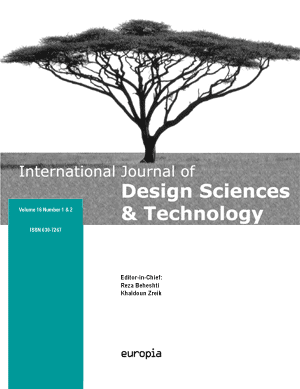 |
|
Revue des Interactions Humaines Médiatisées |
.gif) |




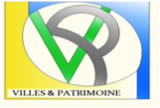

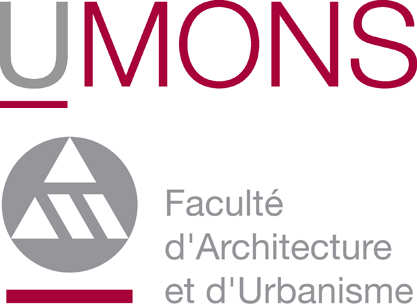

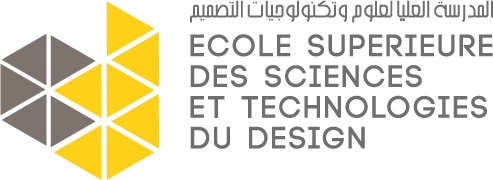


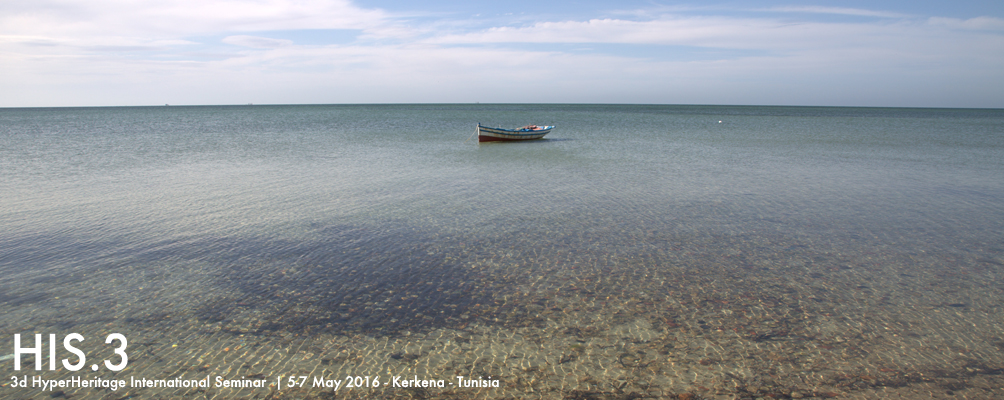
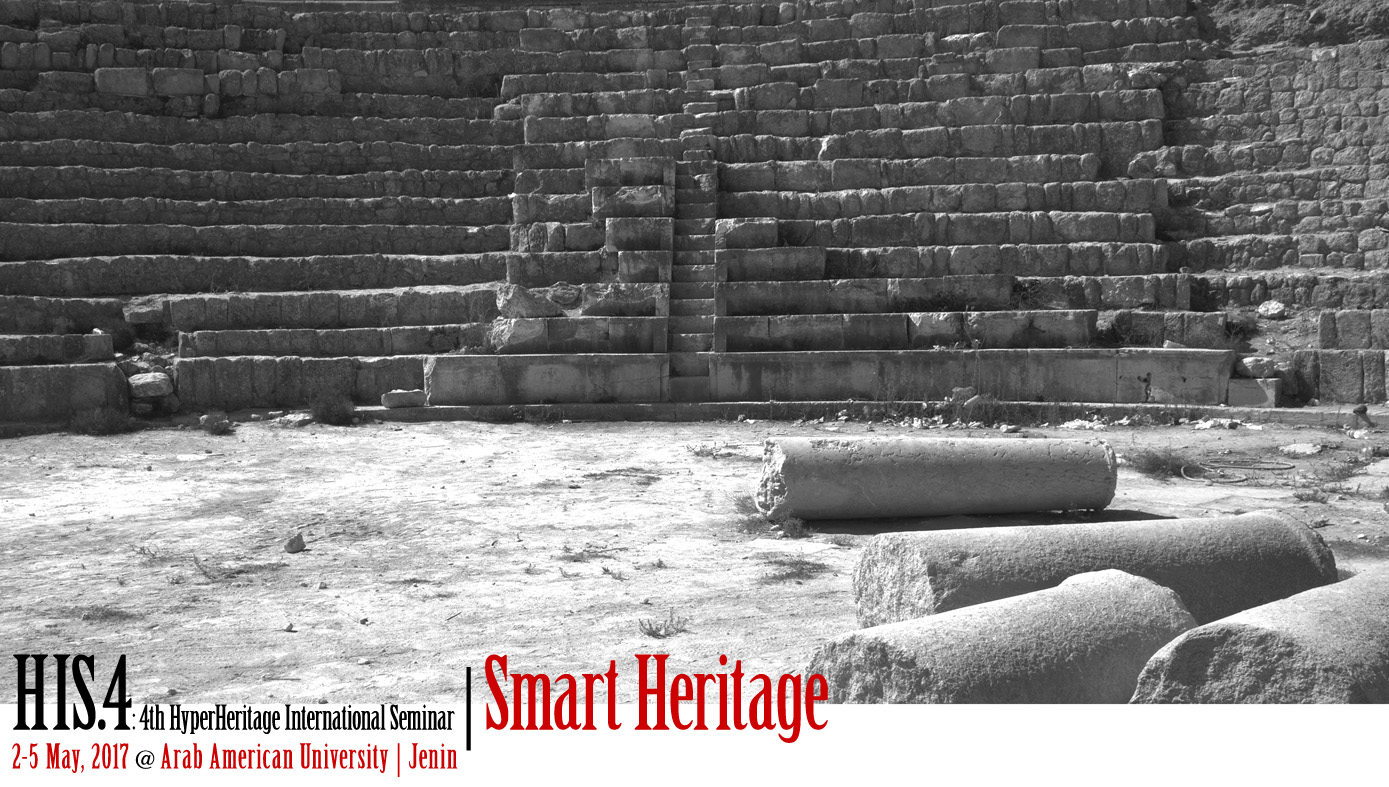
.png)